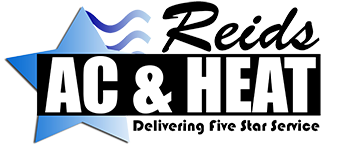Southeast Texas and the Greater Houston region, including Tomball, are still dealing with the effects from Hurricane Harvey. But, eventually the water will recede and it will be time to start storm clean up. Houston saw its share of heavy rain — over 50 inches in some cases — and flooded, impassable streets. The mayor of Houston also declared a local state of emergency.
Your first priority is to ensure everyone is safe and sheltered. Once the crisis eases up, though, your air conditioning system will need work because it is still summer in southeast Texas. Part of staying safe means also avoiding heat illness.
If your home sustained water damage or had water come up into the yard, it is possible that your air conditioning system might have been compromised. Remember, too, that the ground has been saturated, and that can also affect items like outdoor compressor units even if they weren’t surrounded by water.
If you’re unsure about the state of your home’s HVAC system, you’ll need to have it checked out.
Storm Clean Up Outdoor Compressor Check
The compressor units that are placed outside for central air conditioning systems are designed to withstand rain, but flooding is a different animal. Plus, if something fell on the compressor unit housing, like a tree branch, that could crack the housing and let water into the unit.
Humidity and flood water cause parts to corrode over time. Flooding and wind can also allow debris to settle inside the unit, creating a mess that prevents the unit from working properly.
Additionally, all the rain and all the water being soaked up from nearby floods and overflowing creeks and bayous is saturating the soil all over the region.
This saturation means that the soil can move more easily. It is possible that the platform on which your compressor unit is sitting could have shifted. It does call for more inspection to ensure nothing was damaged and for repairs to stabilize the platform.
Indoor Furnace Check
Indoor furnaces need a professional inspection if water made it into your house. Many furnaces are on stands or small platforms, so you may have some breathing room if the water that got in was minimal. But if water was lapping at the bottom of the furnace itself, the furnace will also need inspection.
One thing to keep in mind is that, even if both the compressor and furnace check out as fine and remain completely usable, the extra moisture in the air could have long-term effects. Have your air and heating systems inspected a little more frequently in the next year or two to ensure corrosion hasn’t set in. There can often be a delay before corrosion becomes obvious.
Outdoor and Indoor Insulation
If your home was excessively exposed to the weather — a severe roof leak from the rains, flooding around the base of your home or severe flooding inside the house — the insulation associated with your air conditioning system will need to be replaced. That includes insulation around ducts and other parts of the system.
Indoor Components
Leaks and floods can create similar problems for interior AC parts as they do outdoors, but the damage can be more severe because indoor parts usually don’t have any moisture resistance.
The interior sections of the air conditioning system may need to be bleached. While this sounds simple, and you may hear of people doing it themselves, don’t try it yourself if you’ve never handled this situation before. You might miss spots or break additional components by mistake, and bleach fumes can be overpowering if your home is not well-ventilated.
Ductwork and Vents
The ducts in your home can harbor mold spores. While mold is a general problem in humid southeast Texas on a good day, it’s going to be more of a problem due to the wet conditions. Get the ducts cleaned out to ensure no mold spores are hiding in there.
Reid’s AC & Heat can help you with inspections and repairs. When you’re ready, set up an appointment to check things out.



